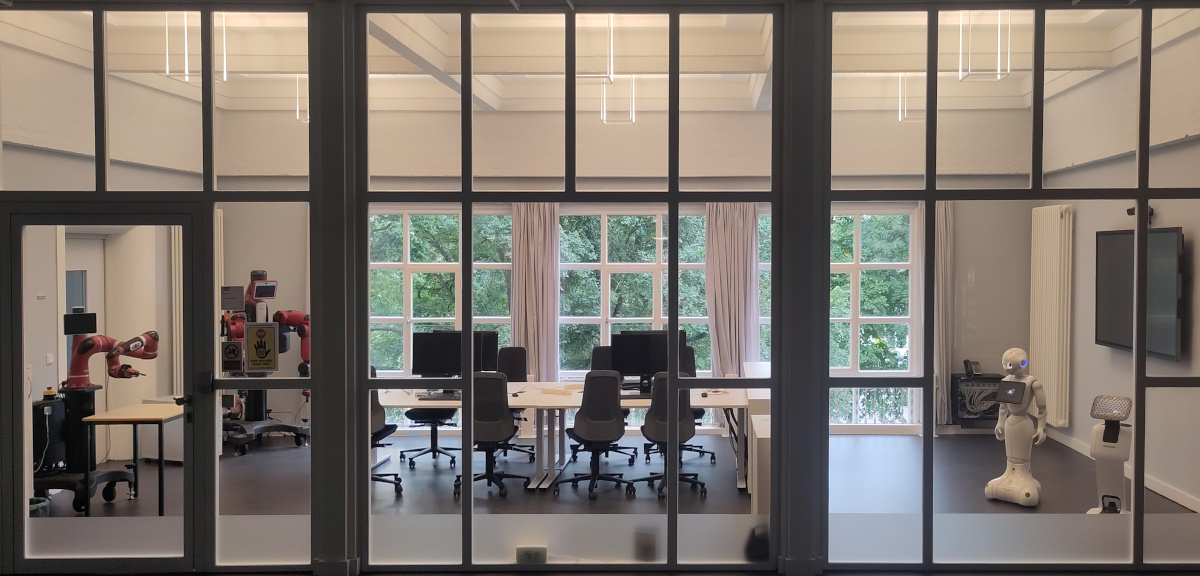Prof. Tobias Dörnbach, PhD

Human-Centered Robotics Lab
Within the Human-Centered Robotics Lab, together with Prof. Dr.-Ing. Reinhard Gerndt I work on Human-Machine Interaction in the context of autonomous Systems. In Room 162, a robot arena is available where for diverse robots different scenarios can be implemented and tested.

Currently, the following systems reside in the lab: two humanoid robots Pepper, humanoid robot Cruzr (in the Open Mobility Lab), two telepresence robots Temi, collaborative robots Baxter and Sawyer, self-developed system FireBot, plus additional small robots for teaching.
For using any robots, please book a time slot in the booking system!
Human-Machine Interaction for autonomous Systems
My research deals with human operators in the Industry 4.0 or in service areas can act in unity with autonomous systems. The machines should be regarded as independently acting assistant, hence supporting humans reliably. This happens by autonomously detecting occuring failures and calling an operator in case of problems. The operator can solve the problem, allowing the system to return into autonomous operation. This is known under termins like "shared autonomy" and, more specifially, "operator in the loop".
User-friendly control and programming of heterogeneous robot fleets
In addition, I research collaboration of heterogeneous autonomous systems in combined robot fleets. In order to be able to collaborate with humans in everyday scenarios, e.g. in service-oriented domains, these should be able to be programmed easily by a domain expert without the domain expert possessing deep technical knowledge. This can use, for instance, tools for Visual Programming that are usable intuitively. Such a tool has been used in this barkeeper scenario:

